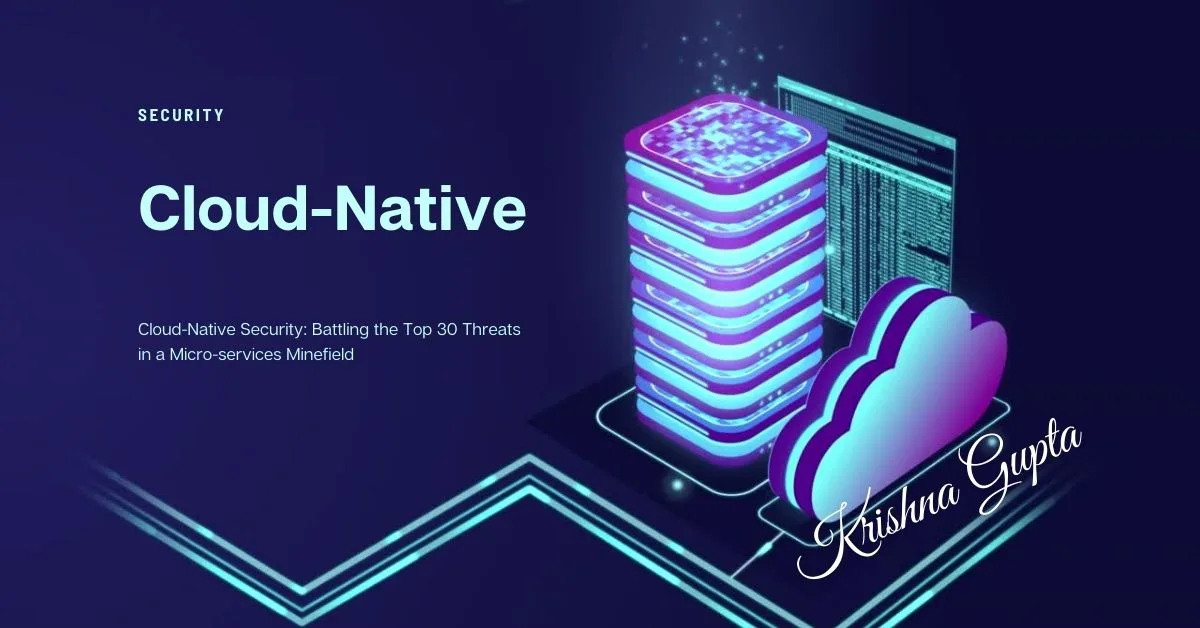Cloud-Native Security: Battling the Top 30 Threats in a Micro-services Minefield
The cloud-native revolution has brought agility and scalability, but it’s also introduced a new frontier for attackers: the intricate world of micro-services and containers. In this dynamic landscape, traditional security measures falter, leaving your applications vulnerable to a vast array of threats. Fear not, brave developer! This article equips you with the knowledge and tools to navigate the minefield, arming you against the top 30 vulnerabilities plaguing cloud-native apps:
1-10: Insecure Infrastructure & Configuration:
- Misconfigured container runtime: Unsecured Docker configurations expose sensitive data and grant unauthorised access.
- Overly permissive IAM roles: Excessive privileges in cloud provider IAM roles create an open door for attackers.
- Unsecured container registries: Public or poorly secured registries can become breeding grounds for malware-infected containers.
- Insecure Kubernetes API: Leaving the Kubernetes API open without proper authentication and authorisation is a recipe for disaster.
- Inadequate network security: Unrestricted network access within clusters and between containers creates a lateral movement playground for attackers.
- Lack of encryption: Sensitive data at rest and in transit needs encryption to protect it from prying eyes.
- Weak passwords: Predictable or reused passwords are easy targets for brute-force attacks.
- Outdated software: Running obsolete software with known vulnerabilities is like leaving your door open.
- Insecure secrets management: Leaking sensitive secrets like API keys and database credentials can have catastrophic consequences.
- Insufficient logging and monitoring: Without proper logging and tracking, you’ll fly blind to potential attacks.
11-20: Container-Specific Vulnerabilities:
- Privilege escalation within containers: Attackers can exploit vulnerabilities to gain root privileges, granting them complete control.
- Denial-of-service (DoS) attacks on containers: Flooding requests can overwhelm resources and bring your application down.
- Container escape: Malicious actors can exploit vulnerabilities to break out containers and access the underlying host system.
- Supply chain attacks: Compromised container images can introduce vulnerabilities into your application stack.
- Insecure container runtimes: Vulnerabilities in the container runtime itself can be exploited to gain unauthorised access.
- Unrestricted container networking: Allowing containers to communicate freely on any port increases the attack surface.
- Container image vulnerabilities: Unpatched vulnerabilities in container images can be exploited by attackers.
- Insufficient container image scanning: Regularly scanning container images for vulnerabilities is crucial for early detection.
- Lack of container runtime sandboxing: Proper sandboxing isolates containers, preventing them from accessing sensitive resources or affecting other containers.
- Untrusted container registries: Downloading containers from untrusted sources can introduce malware or other vulnerabilities.

21-30: Microservices & API Security:
- Broken authentication and authorisation: Weak authentication and authorisation mechanisms allow unauthorised access to your APIs and micro-services.
- Sensitive data exposure: Exposing sensitive data through APIs or within micro-services can lead to data breaches.
- Insecure communication: Unencrypted communication between micro-services and APIs leaves data vulnerable to interception.
- Insufficient API rate limiting: Un-throttled API access can be exploited for DoS attacks.
- SQL injection and other vulnerabilities allow attackers to inject malicious code and manipulate data.
- Cross-site scripting (XSS) and other cross-site attacks can rob user credentials or inject malicious code into user interfaces.
- Logic flaws: Faulty business logic within micro-services can be exploited to manipulate data or bypass security controls.
- Insufficient API documentation: Poorly documented APIs make it sophisticated for adversaries to find and exploit vulnerabilities.
- Lack of API security testing: Regularly testing your APIs for vulnerabilities is essential for early detection and remediation.
- Limited visibility and control: Without proper monitoring and control mechanisms, detecting and responding to security incidents in a micro-services environment is complex.
Securing your cloud-native applications is an ongoing process, not a one-time fix. By understanding these top 30 vulnerabilities and implementing best practices like DevSecOps, container security tools, and robust infrastructure security, you can build a strong defence against the ever-evolving threats lurking in the cloud-native landscape. So, buckle up, developers, and let’s fortify those micro-services!